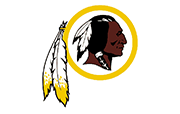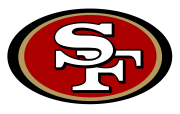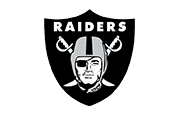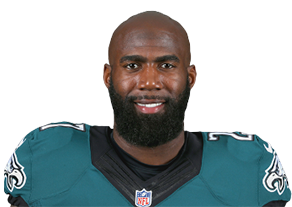After the killing of Alton Sterling and Philando Castile by police in July 2016, I wanted to see if I could play a role in changing this long habit of African American people being mistreated and sometimes unnecessarily killed by law enforcement. The first thing I did was reach out to the Philadelphia Police Department and set up a meeting with Commissioner Richard Ross to have a candid conversation about the issues. I wanted to know the perspective of officers on the recent events. I wanted to hear about some of the struggles and challenges that exist for our law enforcement.
My father always told me “You don’t know what you don’t know!” I knew what it felt like to be a black man in America. I knew how those videos made me feel. I knew my own experiences with law enforcement, and what I’d been taught. What I did not know was how it felt to be a police officer.
This led me to doing a little hands-on research. I signed up to do a ride along with Philly PD to get a feel for things from the police perspective. I was also curious to hear firsthand what folks thought of the police in the neighborhoods that these officers are sworn to protect and serve. So, I spent a day riding along with a couple of Philly cops. A camera crew followed us around.
Check out the Vice Media video:
The first officer I rode with was George Soto from the 25th precinct whose dad and granddad were officers. He has cop lineage in his ancestry. “Police brutality isn’t the problem,” Officer Soto told me, giving voice to comments often heard by those chanting “Blue Lives Matter.” He went on to talk about how he believes that if only those who are engaged by an officer would just do what we’re told, there would be no problem.
I’ve learned that it’s easy, if you’re a cop, to fall into that kind of ‘Us versus Them’ mindset. “I understand, as an officer, you want to make it back to your family every day,” I told Officer Soto. “But you’ve also got to understand the frustration I feel as a black man, when officers seem to feel a greater sense of threat when they’re dealing with a man who looks like me than when they’re dealing with, say, Carson Wentz.”
Officer Soto and I had a series of frank, civil discussions. Throughout the day, I watched officers interact with members of the community on the street. I remember thinking to myself: Officer Soto has no idea how his words and demeanor, though it seems inadvertent, are perceived by me as a black man.
We then got a call over the radio. There were reports of a shooting in a nearby neighborhood in broad daylight, and that’s where we were headed next. On the way there, I was nervous. I knew that these officers would never put me in harm’s way on this ride along, but just the thought of popping up on a scene where there was an active shooter gave me concern.
Someone had sprayed 8 shots from a fleeing van that took off down the sidewalk in an active neighborhood with kids everywhere. Thankfully, no one was hit; but parked cars were shot out and two bullets had gone through the front window of one woman’s home.
Being pro-justice doesn’t have to mean you are anti-police and being a supporter of police shouldn’t mean that we don’t hold them to the highest level of accountability.
Right away, I noticed a disconnect at the scene. In the middle of the street you had several police, huddled up, frustrated that with all of the witnesses present they couldn’t get any answers or information. Then you had the community, all receding to their porches and front yards, frustrated that they must live in an environment where their kids playing in the middle of the day could be in a life or death situation.
I could feel the frustration on both sides, but it was also clear to me that, before this emergency, there didn’t seem to be any relationship between the officers and the community. If you don’t know the officers who are supposed to protect you, you’re less likely to trust them enough to give up information that could put you or your family in danger.
You could feel the hopelessness in that community. The woman whose window was shattered by those two bullets has lived there for decades. She told me she doesn’t go outside except to go to work, because it’s too unsafe. She feels trapped, and doesn’t think anyone is working toward a solution. She and her neighbors are just living in survival mode, trying to make it through every day.
Later, I saw an example of how police and community can work together. I spent time with Captain Michael Cram, a white officer in an all-black neighborhood. He seemed to know everyone’s name. Young black kids saw him and hugged him. Elders in the community hugged him, sang his praises, and still were able to talk frankly with him. They had a real relationship with him, and he with them.
“Officer Cram came in like Superman,” one community leader told me, “helping to clean up a lot of things around here.”
“These guys are my friends, man,” Captain Cram told me. “They’re way beyond community groups. These guys are my friends down here.”
At the precinct, I had a conversation with an African American officer who sees relations between the police and community from both sides. He told me that he’s pulled over African American drivers who have given him some attitude.
“Let’s start this over,” he’ll say, deescalating the situation. But then, on the other hand, he’s taken his uniform off and gotten pulled over on his way home and found himself on the receiving end of hostility that he knows from experience can quickly escalate. More cops need his kind of sensitivity and awareness.
We’ve got a lot of work to do. My ride along with the police, and many meetings with them since, have taught me that there is a need to address the transparency and accountability of our officers to rebuild trust and faith in law enforcement. While we address those policies and best practices, we also need to improve relations between the police and our communities. That takes empathy, understanding, and the willingness to listen to one another. We must as community members continue to acknowledge and support those officers who carry out their duties in an honorable fashion.
There are great police officers who put their lives on the line every day, and we need them to help us keep our communities safe. Our law enforcement must proactively push to regain the trust and faith of the communities that they have been sworn to protect. Being pro-justice doesn’t have to mean you are anti-police and being a supporter of police shouldn’t mean that we don’t hold them to the highest level of accountability.
Results

PhiladelphiaEagles |
|

ArizonaCardinals |
|
Homicides per 1,000 residents
.18 |
Cardinals |
Homicides per 1,000 residents
.07 |
|
Violent crime per 1,000 residents
10.3 |
Cardinals |
Violent crime per 1,000 residents
5.93 |
|
Marijuana decriminalization
Yes |
Eagles |
Marijuana decriminalization
No |
|
Police involved shootings
23 |
Eagles |
Police involved shootings
25 |
|
People in jail per 100,000 residents
448 |
Cardinals |
People in jail per 100,000 residents
191 |
|
% police of color / % population of color 43.2/55 |
Eagles |
% police of color / % population of color 23.4/54.1 |
|
% jail population awaiting trial
134 |
Eagles |
% jail population awaiting trial
169 |
|
Juvenile court case counts per 10,000 residents
307 |
Cardinals |
Juvenile court case counts per 10,000 residents
24 |
|
Arizona
Cardinals |
Sep. 10 |
-
Tie |

Redskins |
Sep. 17 |
-
Tie |

Chiefs |
Sep. 24 |
-
Tie |

Giants |
Oct. 01 |
-
Tie |

Chargers |
Oct. 08 |
-
Tie |

Cardinals |
Oct. 12 |
-
Tie |

Panthers |
Oct. 23 |
-
Tie |

Redskins |
Oct. 29 |
-
Tie |

49ers |
Nov. 05 |
-
Tie |

Broncos |
Nov. 19 |
-
Tie |

Cowboys |
Nov. 26 |
-
Tie |

Bears |
Dec. 03 |
-
Tie |

Seahawks |
Dec. 10 |
-
Tie |

Rams |
Dec. 17 |
-
Tie |

Jets |
Dec. 25 |
-
Tie |

Raiders |
Dec. 31 |
-
Tie |

Cowboys |
Jan. 13 |
-
Tie |
Falcons |
Civic Record:
EAGLES |
Wins
0 |
Losses
0 |
Upcoming Games:
| Jan. 13 | 4:35 PM |  Atlanta Atlanta |
For more information on this data, see the Criminal Justice Season Explained page.
Note: Incarceration numbers are calculated by county, which in Philadelphia is the same borders as the city. For Arizona, we use Maricopa County, where the state’s largest city, Phoenix, is located.


